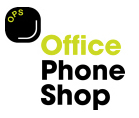What is SIP?
SIP stands for session initiation protocol. It is an IP telephony signalling protocol for VoIP (voice over internet protocol) calls and is the most widely used protocol in IP telephony. Read on for for an explanation of SIP and its implication for the future of communications.
Voice calls involve two stages, namely a call setup stage and a data transfer stage. Protocols allow a phone to connect to another phone or device during the call setup stage. To transfer voice packages between these devices requires further protocols (stage two). SIP is a call setup protocol. It facilitates connection, monitoring and disconnection of VoIP sessions. This allows internet service providers to integrate basic IP phone capabilities with web, email and on-line chat. It means that users can make telephone calls, video and audio calls as well as operate instant messaging between devices over the internet and for free.
For voice calls, SIP utilises the VoIP network to set up the call. It then uses another protocol – the real time transport protocol (RTP) to send the voice data between calls. SIP is a text-based protocol that is similar to HTTP. A SIP end station has a SIP URI rather than a traditional style telephone number. This is similar to a URL and may look something like this:
Sip:user@domain:port
For ease of use, however, most SIP addresses are numbers translated into a SIP address by the device when used.
SIP supports all the features of traditional telephony such as call transfer, on hold and call forwarding. Calls between one or more users at the same time are possible, with disconnection of a user allowed at any time during the call. In addition, users can join the call during a session and operators can enable or disable video connection at any time.
What do you need?
- A SIP provider – An Internet Service Provider will provide SIP in the form of a program installed on a computer or mobile device. Unlike traditional telephony services requiring physical wires, all that is required is an internet connection with sufficient bandwidth to support voice calls and video communication.
- A SIP address – most likely to appear numeric for ease of use, this will translate to a SIP address when used by your device.
- SIP phones – similar to traditional phones in appearance, SIP phones have in-built hardware to enable them to use the internet to make and receive calls. SIP phones use VoIP technology to make calls over either the IP.
- Software – to enable a device such as a computer, tablet or mobile to operate as a SIP phone requires not only installation of a SIP programme, but equipment such as headsets, microphones, sound cards, ear pieces and web cams.
- SIP trunking – used as an addition or alternative to existing ISDN BRI or PRI lines, SIP trunking allows users to make full use of an IP phone system.
SIP trunk providers work in a similar way to traditional telephony providers in that they lease users a phone number and lines. There are no physical lines to install and maintain and set up and call costs tend to be lower. Connection is via a line used only for SIP trunking, over a dedicated line that carries SIP trunking with other IP traffic, or over the Internet on a virtual private network (VPN). SIP trunking allows scalability to cater for increased call volumes. You only pay for the lines you need and it is possible to share the capacity across multiple sites. SIP trunking also enables extension of voice over IP (VoIP) telephony beyond an organisation’s firewall without the need for an IP-PSTN gateway. It is becoming particularly popular amongst businesses adopting flexible working options.

